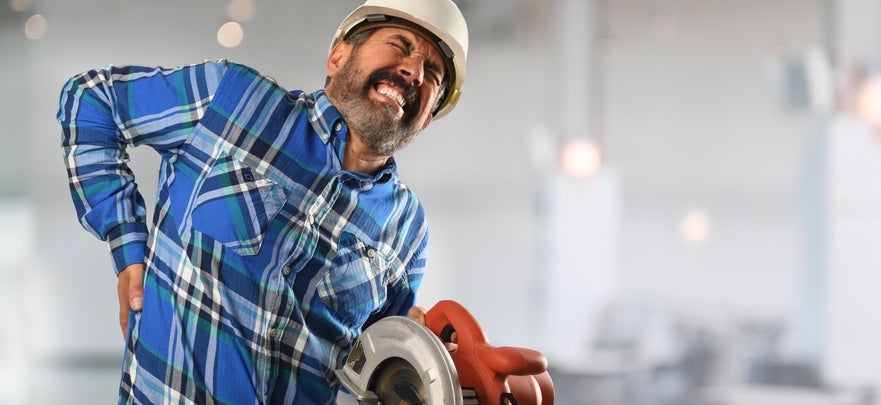Being Active with Back Pain
Most of the population will have back pain at some point in their lifetime. Often, the first time someone feels that there is something really wrong with their back is when they feel a sharp, incapacitating pain right as they do something strenuous like try to lift a heavy box or do something as simple as bend over to pick up some dirty clothes. When back pain strikes, it can be overwhelming. Some people describe the pain as if someone stabbed them in the spine. Others describe the pain as if their spine were made from glass - fragile and could give way at any moment. Doing simple activities such as sleeping, going to the bathroom, and preparing a meal seem nearly impossible.
Acute back pain is usually self-limiting and gets better on its own. However, an initial episode of back pain is usually a sign of an aging spine or potentially worse.Check with your doctor before engaging in any physical activity or taking any of the steps outlined below.
With back pain, getting moving is often the first step to recovery and also the best approach to preventing more long-term and chronic issues. Here are a few steps to take to get your back in better shape.
First, get out of bed. Don’t be tempted to stay in bed all day as a way to “rest and recovery.” Some bed rest is important, but you’ll need to get moving to get your back feeling better.
When it comes to moving, simple walking is the best first step...literally. Avoid activities that require a lot of lifting or bending. Simply let your back support your core by standing and moving. When both walking and sitting, be sure to keep you back as straight as possible. Bad posture (such as being hunched over a computer screen all day) very likely contributed to your back problems. Starting to improve that posture is an important step in addressing your longer term back health.
Make an appointment with your healthcare provider to fully evaluate your back problem. You’ll want to learn from them and your physical therapist which activities are right for your back pain based on where your pain is and how severe it is. Both stretching exercises and exercises that strengthen your core abdominal muscles will be important to your recovery.
Leg raises and other core strengthening exercises can do wonders for back pain. By strengthening your core, they also help with posture which takes further strain and stress off of your back. Leg raises also improve flexibility which also keeps the back from having to take the full load of the body.
Improving your core muscles is again critical. Having strong core muscles takes the pressure off of your back. For the same reason, you may be tempted to use a back brace which also support your back and take the strain off of your spine. These braces are great for when you are doing strenuous activity, but avoid over using them. Back braces may help take pressure off your back, but they may also prevent you from developing the core muscles you need 24 hours a day to protect your back. For that reason, use the back brace only when you need to.
Use heat and ice to ease back pain. Ice can be helpful when back pain first strikes to reduce the inflammation. Heat can be soothing once the initial pain has gone away a bit.
Back pain can become an excuse not to be active. Instead, use back pain as the wake up call to get moving. Even though the pain may signal to you to do less, doing more is actually the right answer. Strengthen those core muscles, start a regular exercise routine and stick with it. Your back will thank you for it.






